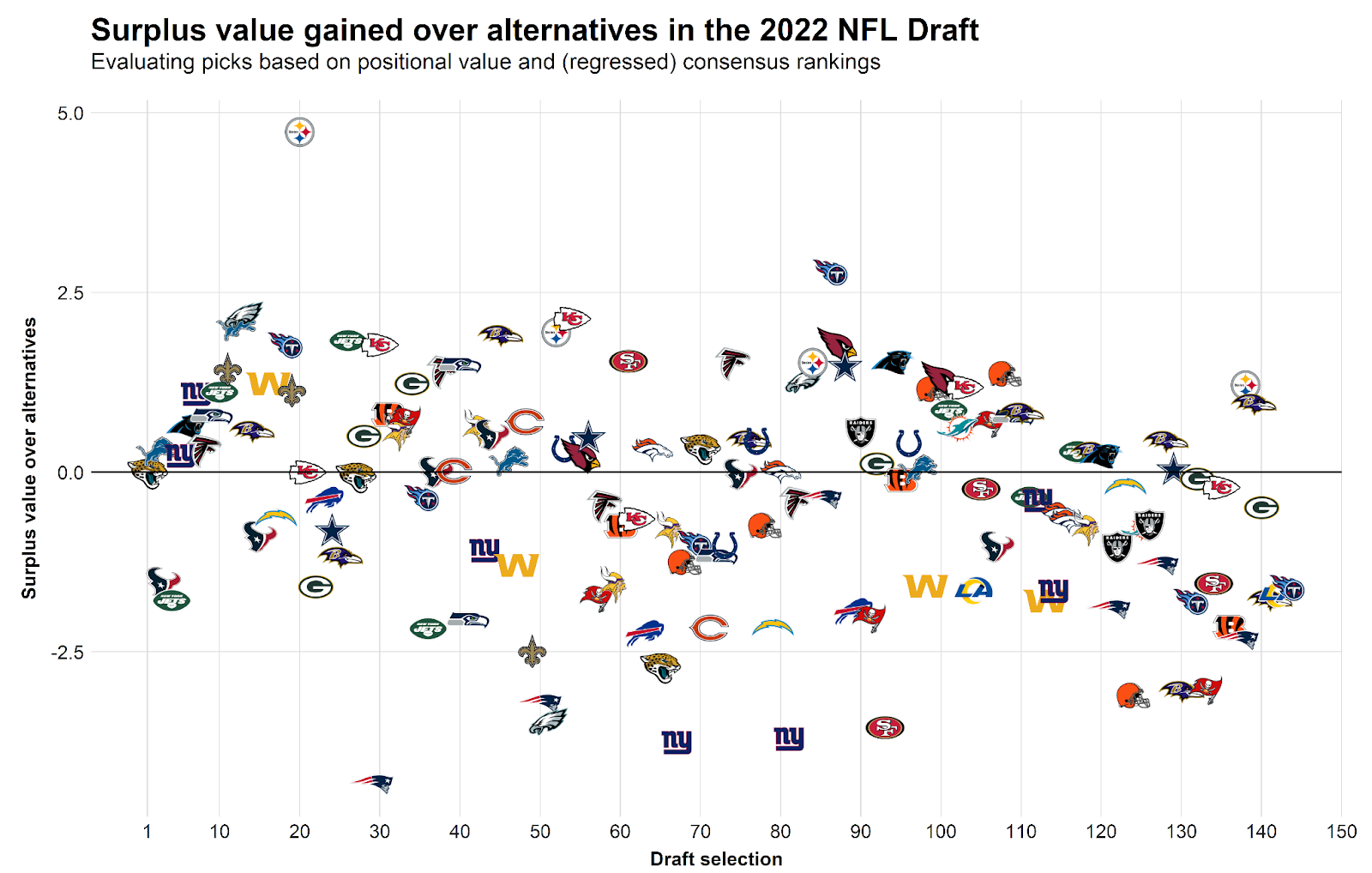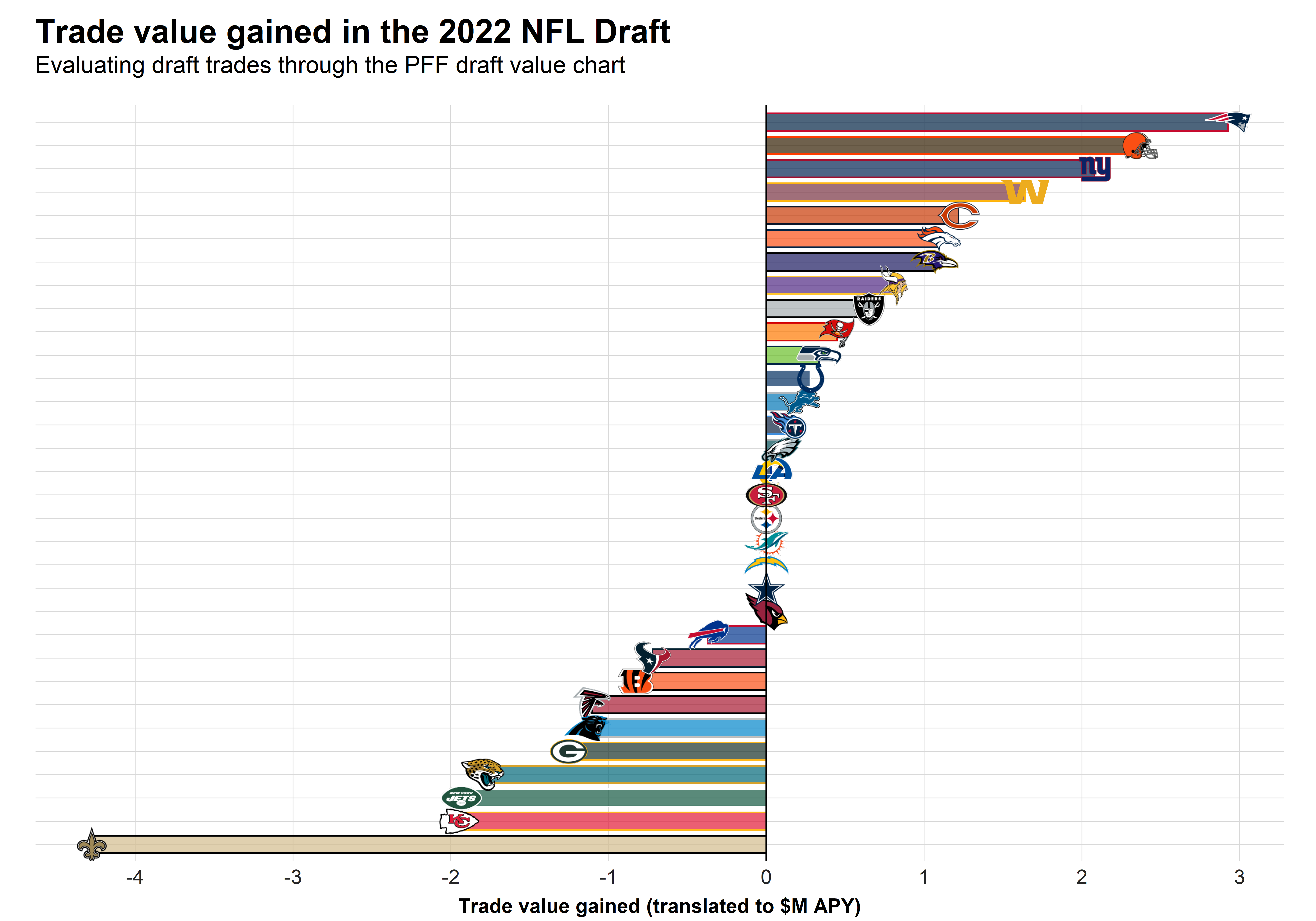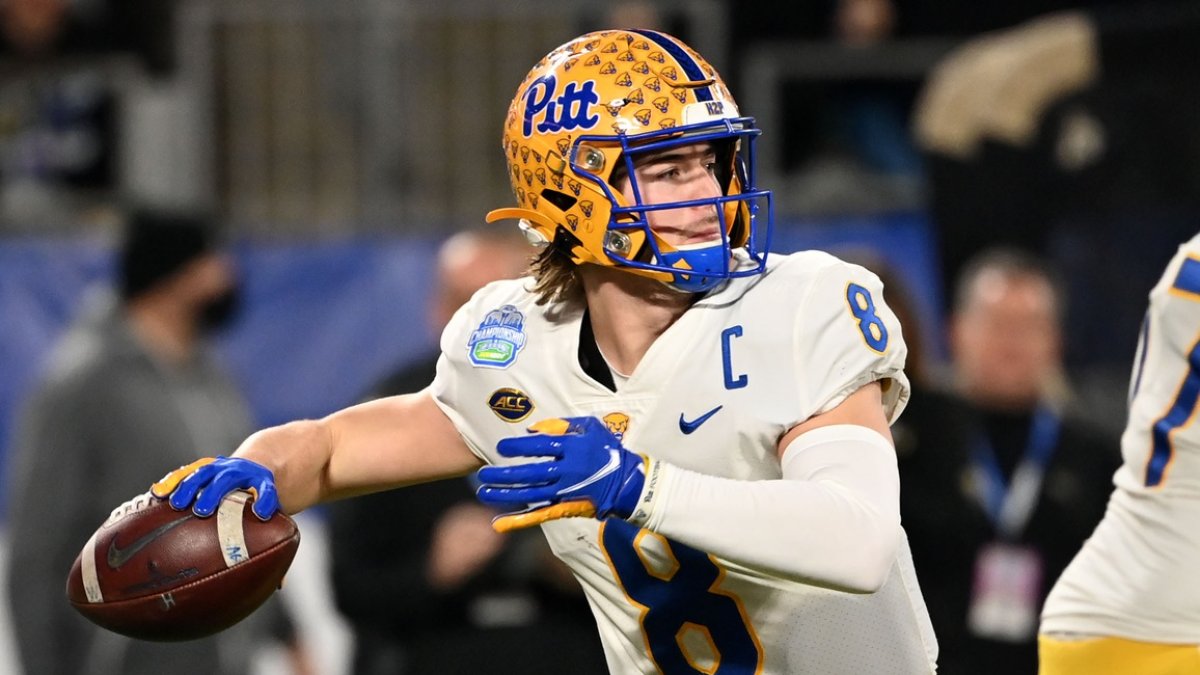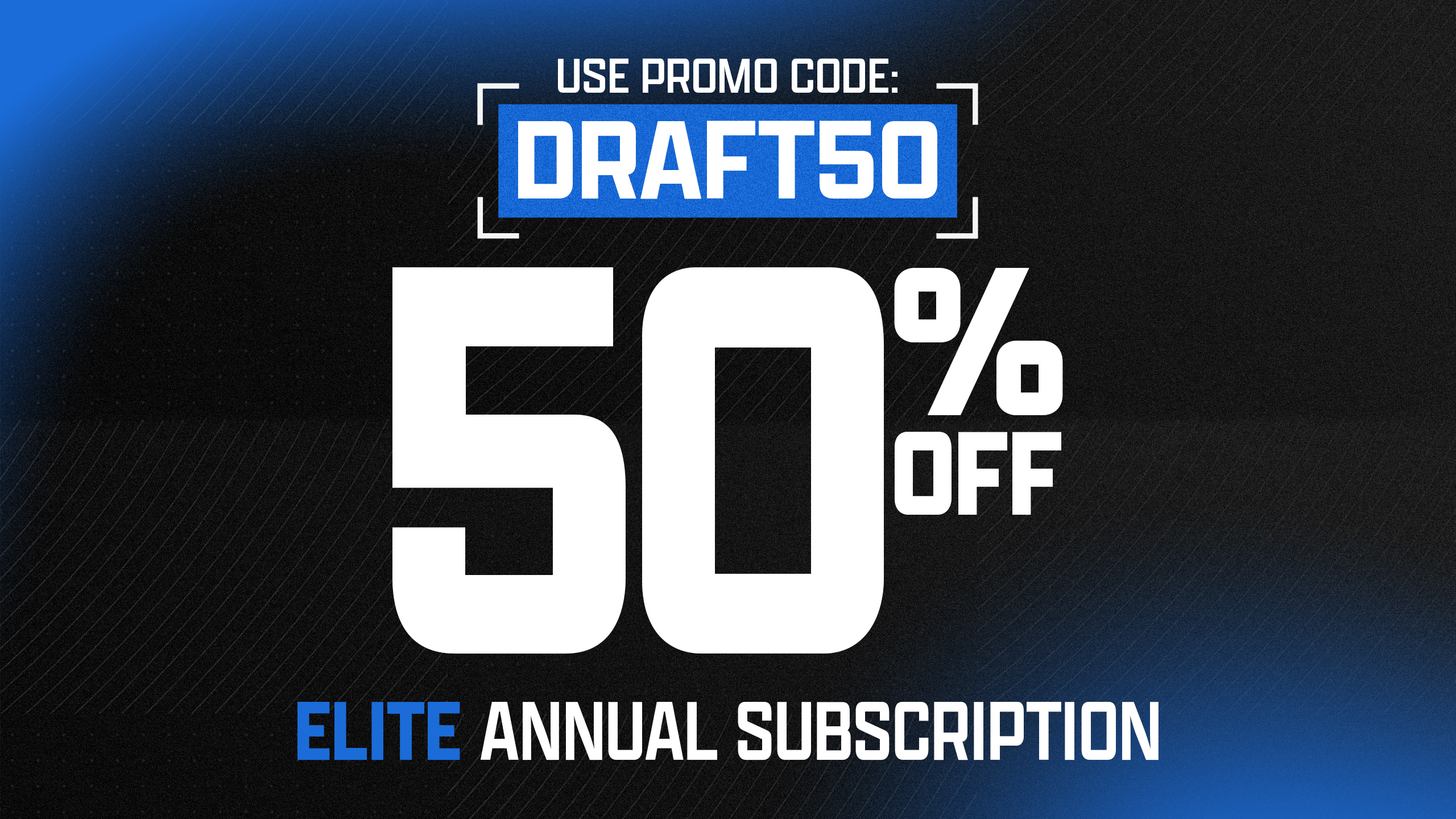With the 2022 NFL Draft in the books, the only question that remains is, which NFL team had the best draft?
While it takes a while until we can definitely find out which 2022 draft prospects become good NFL players, we can attempt to evaluate each team's draft process.
However, the process is inherently difficult: We aren't exactly privy to war room discussions and we don't really know what fuels the decision to pick a particular player.
The run-of-the-mill draft grades articles published by media outlets are seldom particularly useful when it comes to evaluating the process because they often try to measure the overall talent added.
Of course, this is highly subjective and is also biased toward the teams with the most draft capital. For example, the Jets' draft haul of Ahmad “Sauce” Gardner and Garrett Wilson obviously sounds more impressive than whatever the Denver Broncos could have added with their picks (which started at No. 64 overall), but this has little to do with whether New York attacked the draft in a better way than Denver.
Last week, we introduced an analytical way of evaluating picks by combining the concept of surplus value for each position with the predictive power of consensus big boards, which do a fairly good job at describing steals and reaches.
To apply this method to the 2022 NFL Draft, we will make only two changes to how we evaluate picks:
1. Picks are evaluated against “reasonable” alternatives. To compute these alternatives, we don’t just look at the next draft picks made but actually look at a blend of the next draft picks and the best remaining player on the consensus big board. However, players on the big board are only considered a reasonable alternative if they weren’t drafted too far away. For example, Carson Strong doesn’t count as an alternative to Matt Corral in the fourth round, even though he was the 99th-ranked player on PFF's big board. The information that Strong wasn’t drafted at all — due to a medical concern, unfortunately — overshadows the big board rank.
2. For teams without a quarterback need, we don’t consider quarterbacks as a reasonable alternative. Therefore, the value of the Zion Johnson pick by the Los Angeles Chargers is not compared to the value of the Kenny Pickett pick.
The following chart shows the value of each draft pick in the first four rounds:

Obviously, making picks is only a part of the process for teams. The other part is navigating the board with trades.
First of all, we had two significant trades for players: The Arizona Cardinals traded for Marquise Brown and the 100th pick, giving up the 23rd pick in the process. Per the Jimmy Johnson chart, this is roughly equivalent to giving up the 28th pick.
The Philadelphia Eagles made an even greater splash and traded for A.J. Brown, using the 18th and 101st pick. Grading player trades is much harder than grading pick trades, but I think the Brown exchange is pretty fair and reasonable for both teams, so I consider it net-zero for both teams.
The trade for Marquise Brown is probably a bit expensive for the Cardinals, even though Bill Belichick made a very similar trade for Brandin Cooks in 2017. Back then, Cooks was also going into Year 4. He had a very similar draft stock, the same amount of time left on his contract and very similar NFL production.
I consider this trade a small negative for the Cardinals.
Evaluating pick trades is fairly straightforward, as we can just use our draft value chart that yields the PFF Wins Above Replacement (WAR) value of each draft pick. We can translate this to cap dollars by using the rule of thumb that 1 WAR costs roughly 18% of the cap (since WAR is calibrated such that a team of replacement players wins three games. Each team wins 8.5 games on average, so 5.5 WAR costs 100% of the cap).
Here is how teams have fared on draft pick trades throughout the whole draft:

When combining pick values (in the first three rounds) and trade values throughout the draft, here is how we grade each team’s draft:

The Pittsburgh Steelers‘ decision to draft Kenny Pickett was highly criticized, but selecting a quarterback who ranked No. 20 on the consensus big board without needing to trade up is a pretty solid value compared to recent years. The alternatives would’ve been much worse, too, as their quarterback room heading into the draft consisted of Mason Rudolph and Mitchell Trubisky.
Also, 31 other teams at least agreed with them in the sense that no other quarterback would have been worth the 20th overall pick, let alone a second-round pick. Of course, we don’t know whether Pickett would have slid — just like the other quarterbacks — if the Steelers didn’t select him, but given the information that we have about him and his selection, it was a very valuable pick.
Since all the other Steelers picks were also considered good values, the Steelers lead our draft ranking by a pretty good margin. We don’t know whether this draft will really spark another successful era for Pittsburgh, but it was definitely a promising start for the post-Ben Roethlisberger era.
Other good drafts:
• The Tennessee Titans ended Malik Willis’ slide, gained value by trading down from No. 26 and filled a need at the league’s new favorite premium position when they selected WR Treylon Burks at 18th overall. This is a strong draft.
• The Baltimore Ravens pretty much drafted the best remaining player on the consensus board on almost every pick, landing a lot of value picks. Due to positional value, our pick grades don’t love the Tyler Linderbaum selection despite the board value, but their overall draft grade is still very strong.
• The Kansas City Chiefs nailed almost every one of their picks and gathered a lot of potential surplus value by drafting the most expensive positions. This has us even forget their fairly expensive trade up to select CB Trent McDuffie at No. 21.
• The Arizona Cardinals anticipated the run on the wide receivers in the middle of the second round and traded for Marquise Brown. This wasn’t a good move overall, but they made up for it by selecting the best tight end in the draft and selecting two promising pass-rushers in the third round to potentially replace Chandler Jones. I don’t necessarily like the Trey McBride selection in combination with the guarantees they handed to a 32-year-old Zach Ertz earlier this year. However, when evaluating just the draft process, any guarantees for a signed player who might lose snaps to a rookie is a sunk cost.
• The Detroit Lions did something that rarely happens in the NFL draft: They traded up in the first round without losing a lot of value. Add that they selected a valuable player, and we are talking about a good move. Add that they nailed the Aidan Hutchinson pick and didn’t have any hiccups on Day 2. That’s a good draft in my book.
It’s notable that this is surely not the be-all, end-all ranking of the league's draft processes, but it is a directionally reasonable assessment of how teams fared over the weekend.




 © 2025 PFF - all rights reserved.
© 2025 PFF - all rights reserved.